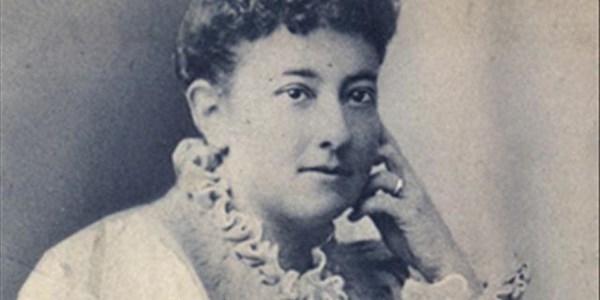Women's Month Blog
Olive Schreiner - Breaking boundaries─── 10:00 Fri, 05 Aug 2016

Author Olive Schreiner (24 March 1855 – 11 December 1920) has not only left her mark on the English literary landscape, her footprints can also be found in Central South Africa. Elzette Boucher found our more about this remarkable woman.
Born Olive Emilie Albertina Schreiner at Wittenbergen Mission Station in the territory of Basutoland (now Lesotho) on March 24, 1855, Schreiner experienced little permanency in her early years first traveling with her family from post to post and then being shipped off to board with family and friends.
Although she received no formal education, she read extensively and began working fulltime as a governess for wealthy farmers in the Cape Colony. During her free time, she wrote.
In 1881, Schreiner left for England, where she hoped to become a nurse and get her novels published. Her dream of nursing was however shattered when an asthmatic condition from her days in the diamond fields became chronic. However, her writing was more successful with The Story of an African Farm accepted for publication on the condition that it appears under the pseudonym, ‘Ralph Irons’, to overcome the prevailing bias against women authors.
Increasingly troubled by her asthmatic condition, Schreiner returned to South Africa in 1889, settling in the Karoo. A couple of years later Schreiner married ostrich farmer Samuel Cronwright. In April 1895, Schreiner gave birth to a daughter, who died only 16 hours later, setting off a deep depression in the author.
Throughout the Boer War, Schreiner continued to defend Boer interests and argue for peace. Driven by her prophetic vision of a non-racist, non-sexist South Africa, Schreiner lived in the tiny hamlet of Hanover, virtually a British army camp.
The last few years of Schreiner's life were marked by ill-health and an increasing sense of isolation. Despite this, she still engaged in politics and was determined to make her mark on a new constitution.
When her feminist classic Woman and Labour was published in 1911, Schreiner was severely ill. Two years later, she sailed alone to England for treatment, but was trapped there by the outbreak of World War I. During this time she came into contact with Gandhi, Emily Hobhouse and Elizabeth Maria Molteno.
After the war, she returned home to the Cape, where she died in her sleep in 1920. She was buried later in Kimberley. After the death of her husband, her body was exhumed, and along with her baby, dog and husband, she was reburied atop Buffelskopmountain, on the farm known as Buffelshoek, near Cradock.
Sources: encyclopedia.com & Dr Carolyn Burdett, Birkbeck, University of London
Elzette Boucher found out more about Olive Schreiner:













